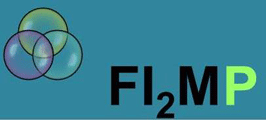
Functional Interaction between Insects, Microbes and Plants
STUDENT PROJECTS
Pollen-associated anti-microbial compounds. Upon landing on a stigma surface, pollen grains germinate and penetrate the stigma tissue with a pollen tube that grows through the style tissue towards the egg apparatus. This invasive growth of pollen tubes creates cuts in the protective surface of plants, which can be utilized by microbes to infect the plant. Plants may prevent these attacks by shielding the penetration sites with anti-microbial compounds associated with the pollen coat. In this project, we will analyse the anti-microbial capacity of pollen and test whether these new anti-microbial compounds may be applied to human pathogens. The project includes broad screening approaches using semi-automated, high-throughput pollen and bacterial cultures as well as identification and purification of chemical compounds or proteins (HPLC, gas chromatography, mass spectrometry).
Main supervisors: Wessler, Obermeyer
Predicting the salience of olfactory cues for insects using electrophysiological, behavioural and statistical methods. Volatiles mediate diverse interactions between flowers and insects but no model exists to predict the salience of the signals for the receivers. The aim is to develop such a model based on the qualitative and quantitative composition of molecules constituting a floral scent bouquet.
Main supervisors: Junker, Dötterl
Bacteria affect pollen germination and pollen tube growth. Preliminary results showed that bacteria can promote pollen tube growth. The aim is to identify bacteria that facilitate pollen germination and tube growth and to reveal the molecular basis for this finding.
Main supervisors: Junker, Obermeyer
Rapid adaptation of flower characteristics to novel pollinators. The Hawaiian plant species Metrosideros polymorpha is originally adapted to bird pollination. Nowadays, invasive honeybees replaced the birds as primary pollinators, which led to a rapid shift in morphological and olfactory flower traits. The aim of the study is to reveal the genetic basis for this adaptation using modern molecular methods.
Main supervisors: Hörger, Junker
The stench of drought. under construction To answer the question whether plants/flowers change their volatiles during drought stress, model plants and crops are grown under defined conditions in growth chambers and subjected to a controlled stress condition while sampling volatiles. Techniques include controlled plant growth with online-monitoring of growth (turgor pressure) and environmental parameters (soil moisture, …) and identification of volatile compounds.
Main supervisors: Obermeyer, Dötterl
Insect receptors for flower fragrance. under construction
Main supervisors: Obermeyer, Dötterl
Green mining: microbe-assisted uptake of heavy metals from e-scrap by plants. under construction
Main supervisors: Obermeyer, Hörger, Wessler





